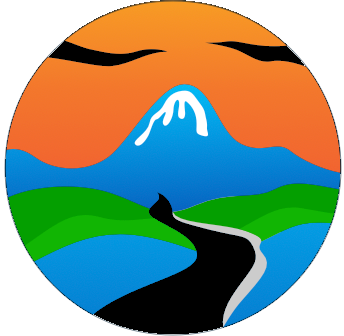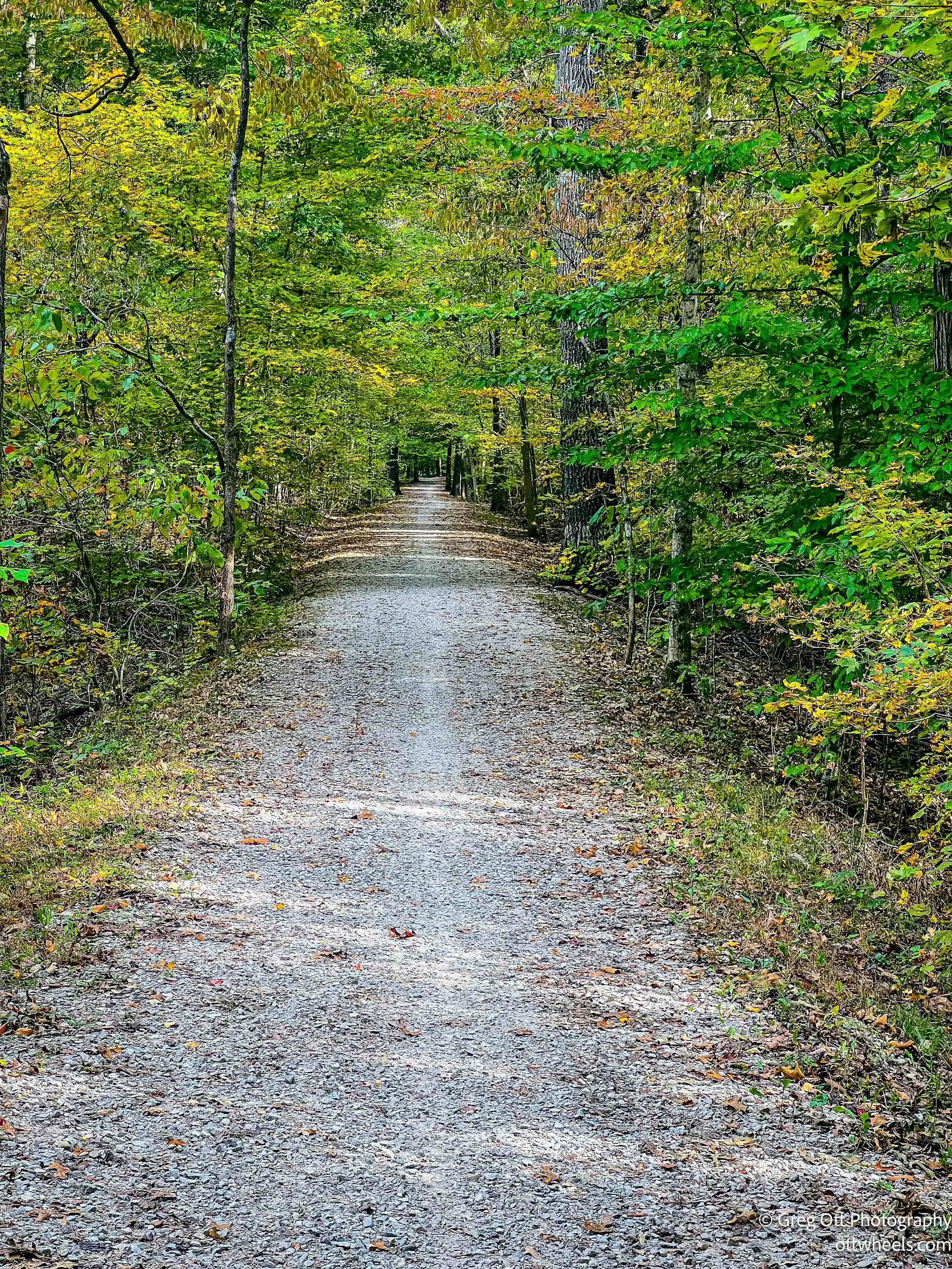Mammoth Cave Railroad Trail Ride to Park CityI
I woke a little after 7 a.m. in the Land Between the Lakes National Recreation Area. I had a list of chores and a long drive ahead of me. By 9 a.m., I’d taken care of the not-so-fun essentials—cleaning the toilet, topping off the water tank, wiping out the refrigerator, and hauling out the trash. There was still more to do, but I decided that was enough for one morning. It was time to move on.
My destination was Mammoth Cave National Park. The van’s gas gauge hovered just above a quarter tank, and I found a Sinclair station about sixteen miles away. It was a small place—four old pumps and a gravel lot. One side was blocked by a large camper parked sideways, and a guy with a Chevy truck had his hood up at the next island. His battery was dead, and the camper owner was trying to jump-start him. Sparks were flying just a few feet from the pumps, which didn’t seem like the brightest idea, but luckily there weren’t any gas fumes hanging in the air.
Google Maps said I’d reach the park around 1 p.m., though I made a quick detour to Kroger to restock a few things. I actually arrived at the park entrance just before 1:30. I’d made my campground reservation the night before, and the ranger on duty handed me a map—my site was close to the entrance, tucked beneath tall trees.
On the way in, I’d noticed a bike trail and asked the ranger about it. He told me it was the Mammoth Cave Railroad Trail, which runs along the route of the old rail line that once carried visitors to the caves. That was all I needed to hear. I parked, changed, and had the bike unloaded by 2 p.m.
Mammoth Cave Railroad Trail
The visitor center was only a quarter-mile away and marked the actual trailhead. The building was open, but the park itself was operating under limited service because of the government shutdown. The staff inside were employees of a private company running the gift shop and cafeteria. Cave tours were suspended until further notice.
The weather was perfect for an autumn ride as I set out on the Mammoth Cave Railroad Trail, an old rail bed that once carried visitors to Mammoth Cave long before it became a national park. The trail runs nine miles one way, but with the added distance into Park City, the ride totaled just over twenty-one miles. Cool air, flashes of gold and red leaves, and that unmistakable fall scent made it one of those rides that perfectly capture the change of seasons.
The path is mostly crushed limestone, shaded by oak and hickory. It follows the original railroad route that operated from the 1880s through the 1930s. It’s hard to imagine steam engines once chugging through these quiet woods, but the interpretive signs bring that history to life. I stopped often to read them and take photos. The stories along the way were compelling.
One of the first signs, “The Trestle and the Highway,” described how the original train crossed a deep gap on a wooden trestle—long gone now, replaced by a simple stretch of trail. A little farther on, “Wetlands on the Roof” caught my attention. It explained a geological feature where rainwater collects above an impervious shale layer, forming a pond that slowly seeps into the limestone below instead of draining away. There was a short boardwalk loop there—about four-tenths of a mile—and I took it just to view the entire pond. It was worth the detour: quiet, almost otherworldly, with only the faint rustle of leaves overhead.
There was one steep hill on the way—a loose, gravel-covered climb that caught me off guard. I tried powering up it, but the back tire spun out and I ended up walking the bike to the top. On the return trip, I made sure to build up speed beforehand, and that made all the difference. It’s the kind of trail that teaches you as you go—rolling, scenic, and just challenging enough to keep it interesting.
A bit farther along, I came to “Procter’s Cave and Hotel.” The plaque stood alone in a clearing, the only reminder of the hotel that Larkin J. Procter built for early cave visitors. It’s strange to picture this now-silent forest once filled with guests stepping off trains, lanterns in hand, ready to explore the underground world. It’s now forest.
A few miles later, I reached Diamond Caverns, one of the region’s most famous show caves. The sign told the story of its discovery by a runaway slave in the mid-1800s who stumbled upon the glittering calcite formations by chance. I stopped to admire the old hotel and the cave entrance building before pushing on toward Park City.
Park City
Park City was a quiet finish. Calling it a “city” feels generous—it’s a small town with a couple of shops, a diner, an inn (The Grand Victorian Inn), and not much else. I took a few photos of Miss Betty’s Diner, which has a colorful mural on the side, and a small shop called The Grateful Hearts Boutique, filled with clothes and handmade items. There’s a certain sleepy charm to it, but the real highlight sat just off the main road: the ruins of Bell’s Tavern.
Built in 1830 as a stagecoach stop, Bell’s Tavern became famous for its fine cuisine, well-heeled patrons, and a peach-and-honey brandy said to bring “joy before the journey’s end.” The tavern burned in 1860, and the Civil War ended any chance of rebuilding. What remains are graceful stone walls and arched doorways open to the sky—beautiful ruins framed by autumn trees. It’s easy to see why it’s on the National Register of Historic Places. Standing there, I could almost hear carriages pulling up, travelers laughing, and the clink of glasses inside.
The ride back to the Mammoth Cave campground was smooth with only one difficult part. The air had cooled, and the afternoon light filtered through the forest in long, golden streaks. Damp leaves scented the air, that unmistakable smell of fall taking hold. I passed the same signs again, the same quiet clearings, but the ride felt different for some reason.
It was one of those days that remind me why I travel the way I do—slow enough to notice the small things most people miss, long enough to feel the rhythm of a place. The Mammoth Cave Railroad Trail may not be dramatic, but it’s rich in history and quiet beauty. By the time I rolled back into the trailhead, I was tired in the best possible way. My only regret was that the cave tours were shutdown.














